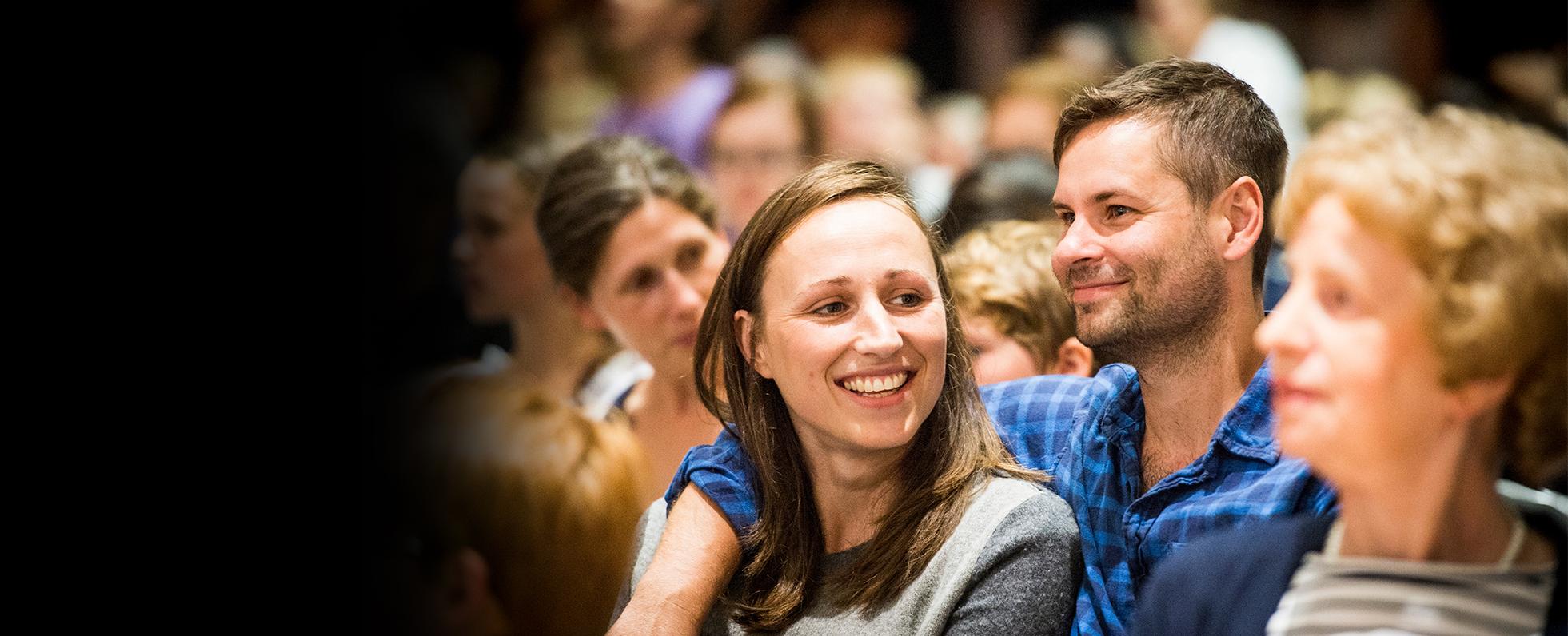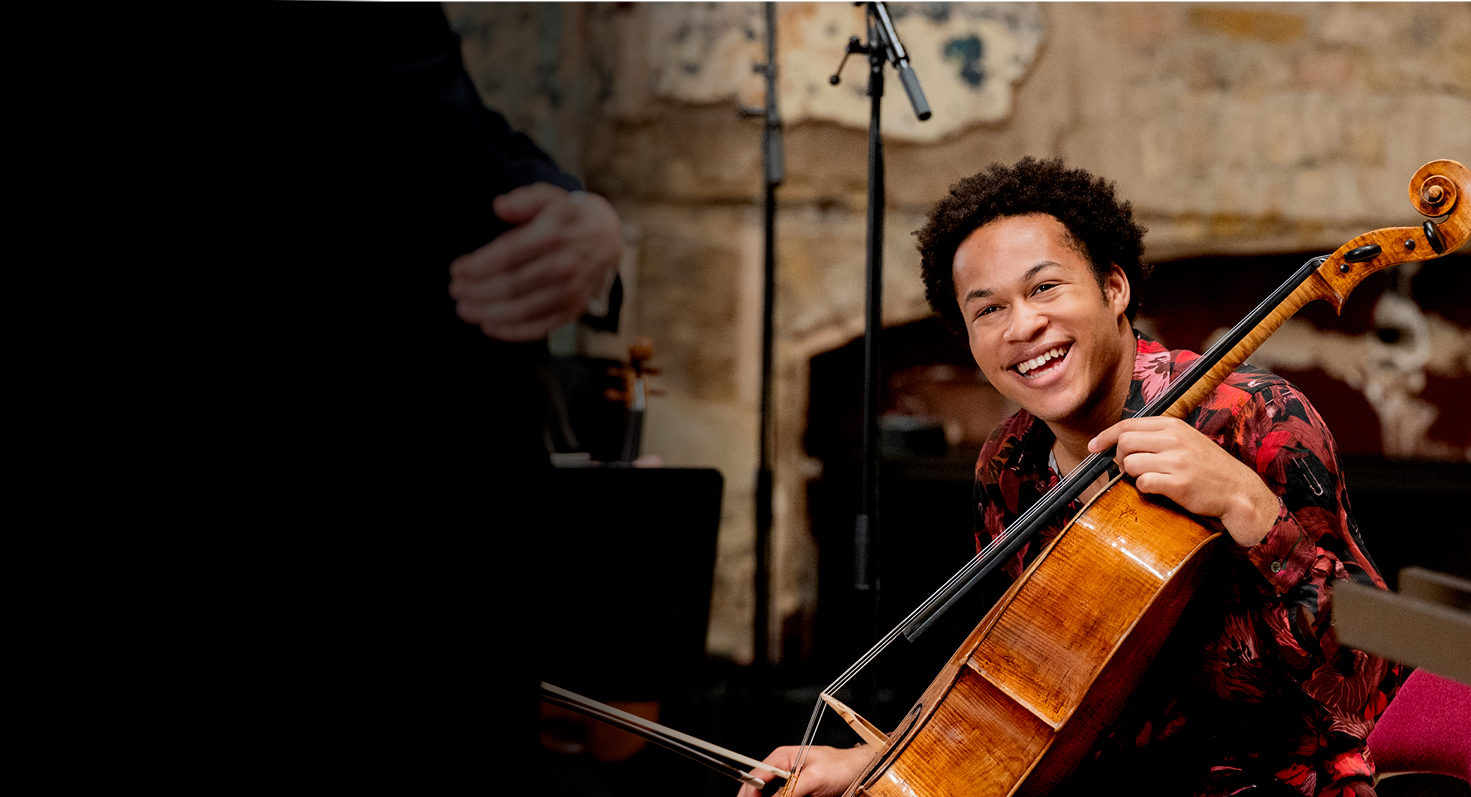Keyboards
Everyone is familiar with the sound of the piano and the organ. Most are also aware of how the piano sounds as a solo instrument with an orchestra backing.

Instrument: Keyboards
Endowment opportunities at the Philharmonia offer supporters unique access and insights to our players. Find out more here:
Introduction
From Rhapsody in Blue to Tom and Jerry playing one of Liszt’s Hungarian Rhapsodies in unforgettable style, many of the greatest musical moments are for piano with orchestra. However the use of keyboard instruments in the orchestra is very varied and although the keyboards are no longer considered permanent members of the orchestra as cellos or flutes would be, there are numerous pieces of music where they form part of the orchestra playing on an equal footing with the other instruments. When in this role they are often situated towards the back near the percussion section.
In the 18th century keyboard instruments such as the harpsichord were a standard feature of orchestras. Then, as keyboard technology improved, they became increasingly used just as solo instruments. The emergence of the piano with its powerful tone and very wide range made it a more self-contained instrument and less easy to include as a member of the orchestra. Nevertheless, there are examples of orchestral use of keyboards throughout the 19th century, and in the 20th and 21st centuries they are very commonly used as part of the orchestra.
Another regularly used keyboard is the celesta which is like a large glockenspiel played with a keyboard, rather than percussion beaters. It can have a magical effect and perhaps its most famous moment is in Tchaikovsky´s Nutcracker Suite.
Feeling creative?
Download the Philharmonia Orchestra sound sample library, suitable for making any kind of music, no matter the style.
Other Keyboards
Harpsichord
The harpsichord produces a sound by plucking the strings within its soundboard. The sound of a harpichord is therefore closer to that of a steel-stringed guitar than of a piano. The harpsichord, an instrument which predates the piano, is particularly associated with music of the Baroque era when composers including JS Bach, Handel and Vivaldi were writing music. Although many composers wrote solo music for the harpsichord – perhaps the most famous being the sonatas of Scarlatti – one of its main functions was harmonic, providing a continuo within an ensemble. The dominance of the piano throughout the last two-hundred years has diminished the role of the harpsichord to a great extent. However, contemporary composers looking for distinctive sounds within their music, and advocates of authentic performance of early music mean that the harpsichord has not been completely supplanted.
Organ
The organ, one of the oldest instruments in western music, uses a series of pipes to produce its distinctive sound. The timbre of these pipes is controlled by stops and the organist plays the notes using a keyboard plus a series of foot-pedals. Because the fingers and the feet have a role in playing notes (as opposed to the piano where the feet control other aspects such as dynamics) playing the organ requires very good coordination, particularly when playing contrapuntal music with simultaneous lines of music. Organs have a strong association with Christian music and the timbre of them is particularly suited to accompanying church choirs.
Synthesizers
Developments in electronics throughout the twentieth century allowed for the creation of entirely synthesized sounds. The timbre of any instrument is distinct from that of another instrument because of the different overtones it produces across the harmonic series when blown, struck, or bowed. By breaking down the sound of, say, a clarinet into its harmonics – the different rates at which the air column in the instrument vibrates – and mapping this across a series of electronic generators, one can approximate the sound of the clarinet electronically. This process, adding the layers of a sound together to create a whole, is called additive synthesis. It is often expensive as it requires a number of generators and the final result is often only a rough approximation of the instrument. Other types of synthesis, which are more complex, allow for the creation of much more accurate sounds.
The synthesizer can also be used to synthesize completely new sounds which bear little resemblance to orchestral instruments. The ability to alter sounds and change almost every component within them has led to composers having an almost infinite palette of timbres available to them.
Join us on Instagram
Keep up to date about online concerts, behind the scenes content and much more

Keep up to date
Sign up for email updates and be the first to receive stories, films and concert announcements

Support the Philharmonia
Enjoyed this content? We need your help to keep these resources free

